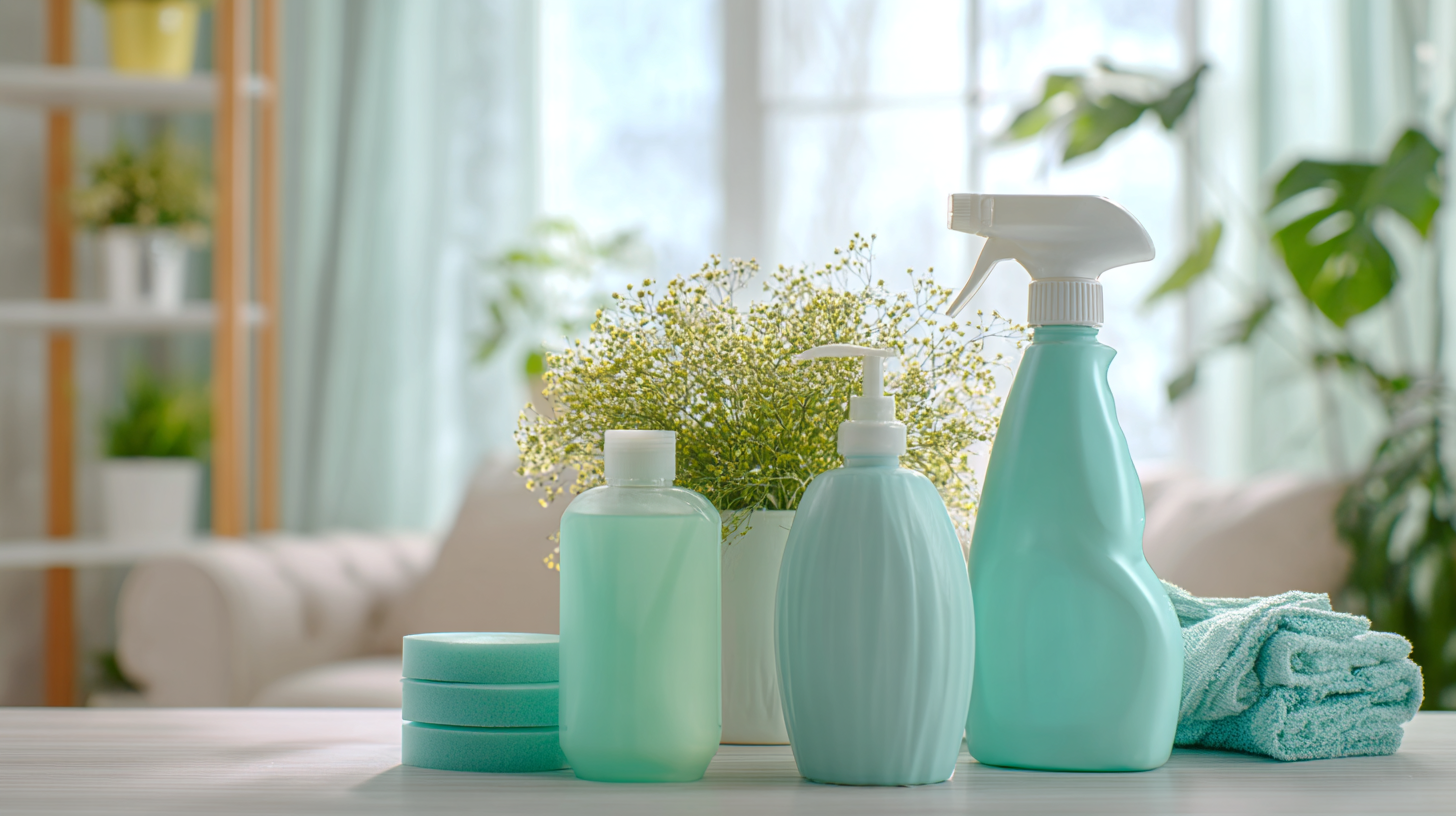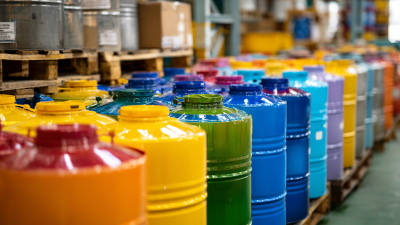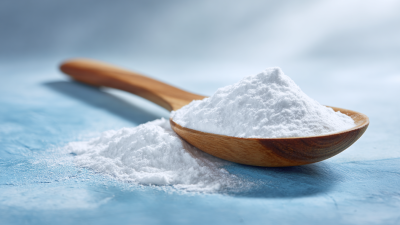In today's health-conscious world, the importance of effective disinfectant and disinfection practices cannot be overstated. With the global cleaning and disinfection products market projected to reach $45.6 billion by 2027, as reported by Grand View Research, consumers are increasingly seeking reliable solutions to maintain a safe home environment. Disinfectants play a critical role in reducing pathogens, with studies indicating that proper application can decrease the presence of harmful bacteria by up to 99.9%. However, with a plethora of products available on the market, understanding the nuances of different types of disinfectants—ranging from quaternary ammonium compounds to hydrogen peroxide—is essential for making informed choices. This guide aims to demystify the selection process, empowering homeowners to choose the right disinfectant for their unique needs while ensuring optimal cleanliness and safety in their living spaces.

When it comes to disinfecting your home, understanding the types of disinfectants available is crucial. Disinfectants can generally be categorized into chemical and natural solutions. Chemical disinfectants, such as chlorine bleach and quaternary ammonium compounds, are effective in killing germs but may pose health risks due to their harsh ingredients. On the other hand, natural disinfectants, derived from plant-based or non-toxic sources, provide a safer alternative while still offering antimicrobial properties.

Tips: When selecting a disinfectant, consider your living environment and the presence of children or pets, as this can influence which type of disinfectant is safest for use. Additionally, always check for specific labels or guidelines on the product to ensure it meets your disinfecting needs.
In addition to traditional disinfectants, there are eco-friendly options such as vinegar and hydrogen peroxide that can be just as effective in managing bacteria and viruses. These natural solutions often come with fewer environmental impacts and are safer for daily cleaning routines. Understanding these differences can help you make informed decisions about maintaining a healthy home.
Tips: Experimenting with natural solutions can also save money and minimize chemical exposure. Mix common household items to create effective cleaning agents that are both safe and effective.
When selecting a disinfectant for your home, understanding the effectiveness of various types is crucial. Among the various disinfectants, quaternary ammonium salts (QAS) are widely used due to their germicidal properties. Their efficacy can vary significantly based on the length of their alkyl chains and the type of counterions they possess. For instance, QAS with longer chains tend to exhibit enhanced antimicrobial activity against a broader range of pathogens, making them a preferred choice in environments that require stringent sanitization.
In addition to QAS, hypochlorous acid (HOCl) has gained attention for its effectiveness as a disinfectant. HOCl has been shown to possess strong germicidal activity, especially against priority human pathogens. It acts quickly and is less harmful compared to traditional chlorine-based sanitizers, making it a safer option for households aiming to maintain a hygienic environment.
**Tips:** When choosing a disinfectant, consider its active ingredients and match them with the specific pathogens you wish to target. Always check the recommended contact time to ensure maximum effectiveness. Additionally, it’s beneficial to opt for products that are safe for both your family and the environment, as many traditional disinfectants can leave harmful residues.
When it comes to selecting the ideal disinfectant for your home, safety considerations regarding toxicity and skin sensitivity must be prioritized. According to the U.S. Environmental Protection Agency (EPA), many common disinfectants contain harsh chemicals that can emit volatile organic compounds (VOCs), potentially leading to respiratory issues and skin irritation. For instance, products containing bleach can cause skin burns and eye damage if not handled correctly. Consequently, consumers should look for disinfectants with lower toxicity ratings and a better safety profile, which often include natural ingredients that are less abrasive while still effective in eliminating bacteria and viruses.
Additionally, skin sensitivity is a crucial factor, especially for households with young children or individuals with pre-existing skin conditions. A report by the American Contact Dermatitis Society highlights that disinfectants with fragrances and certain preservatives are significant contributors to allergic reactions. Opting for fragrance-free, hypoallergenic disinfectants can mitigate these risks, ensuring a safer cleaning experience. Moreover, utilizing products certified by organizations such as Green Seal or the EPA’s Safer Choice program often indicates a more environmentally friendly formulation with reduced health hazards, enabling homeowners to maintain cleanliness without compromising their family’s health.
| Disinfectant Type | Active Ingredient | Toxicity Level | Skin Sensitivity | Recommended Use |
|---|---|---|---|---|
| Alcohol-Based | Isopropyl Alcohol | Low | Moderate | Non-porous surfaces |
| Chlorine-Based | Sodium Hypochlorite | High | High | Bathrooms, kitchens |
| Quaternary Ammonium Compounds | Benzalkonium Chloride | Low to Moderate | Low | Surfaces and soft items |
| Hydrogen Peroxide | Hydrogen Peroxide | Low | Low | General cleaning |
| Essential Oil-Based | Tea Tree Oil | Very Low | Low to Moderate | Light cleaning and scenting |
When selecting a disinfectant for your home, it's crucial to consider its environmental impact, particularly its biodegradability. Traditional disinfectants often contain harsh chemicals that can be harmful to both human health and the environment. These substances may persist in ecosystems, disrupting local wildlife and contaminating water supplies. By opting for biodegradable disinfectants, you can minimize these risks. These products break down more easily in nature, reducing the potential for long-term environmental damage.
Eco-friendly disinfectant options have gained popularity as consumers become more aware of sustainability issues. Many of these alternatives use plant-based ingredients that not only effectively kill germs but also pose less risk to the environment. Products labeled as "green" or "eco-certified" often meet stringent guidelines for environmental safety, ensuring that they won't leave harmful residues. By choosing eco-friendly disinfectants, you contribute to a healthier home while supporting sustainable practices that benefit our planet for future generations.
When selecting a disinfectant for home use, understanding the regulatory standards set by the Environmental Protection Agency (EPA) is crucial. The EPA has developed a comprehensive system of ratings and certifications that indicate the effectiveness and safety of disinfectants. Products that successfully meet the stringent criteria established by the EPA are granted approval, ensuring they have been rigorously tested for their biocidal properties against various pathogens, including bacteria and viruses. This information is typically found on the product label, providing consumers with confidence in their choice.

In addition to effectiveness, the EPA ratings also encompass safety considerations for both human health and the environment. Disinfectants are categorized based on their active ingredients and the potential risks they pose if misused. For instance, products with lower toxicity ratings indicate a lesser risk to humans and pets, making them suitable for regular household use. Furthermore, understanding certifications such as the EPA’s Safer Choice label can guide consumers towards environmentally friendly options that do not compromise on cleaning power.
Familiarizing yourself with these standards allows for informed decision-making, ensuring that the disinfectants chosen are not only effective but also safe for your family and the planet.






